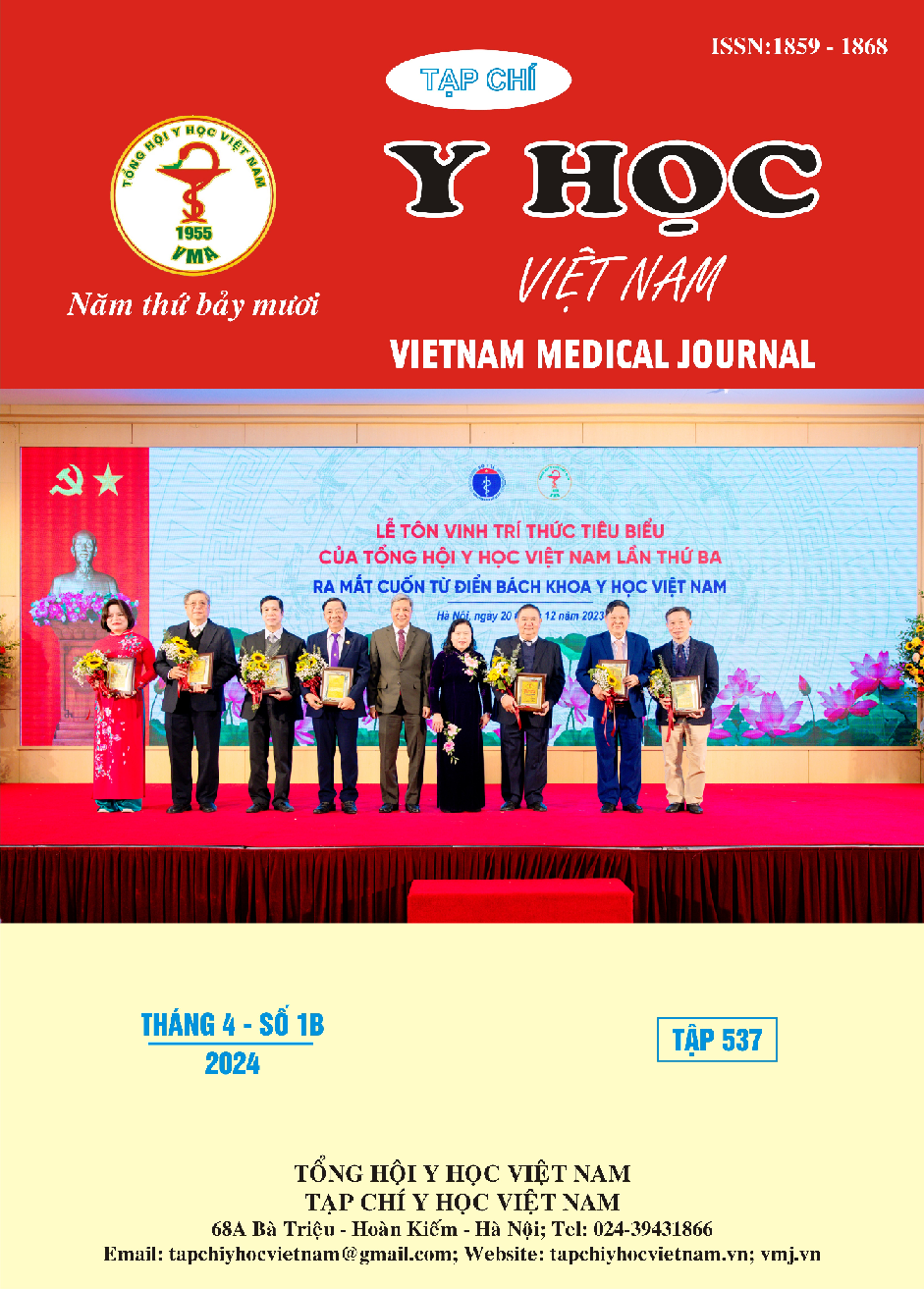KẾT QUẢ THAI NGHÉN CỦA SONG THAI MỘT BÁNH RAU, HAI BUỒNG ỐI TẠI BỆNH VIỆN PHỤ SẢN TRUNG ƯƠNG
Nội dung chính của bài viết
Tóm tắt
Đặt vấn đề: Song thai là thai nghén có nguy cơ cao, có thể gây nhiều biến chứng cho sức khỏe cho mẹ và thai trong cả quá trình mang thai cũng như sinh đẻ. Song thai một noãn, một bánh rau, hai buồng ối chiếm tỷ lệ khoảng 70% của song thai một noãn và là song thai có nhiều biến chứng nhất trong các loại song thai. Mục tiêu: Mô tả kết quả thai nghén của các thai phụ được chẩn đoán song thai một bánh rau hai buồng ối tại bệnh viện Phụ sản Trung Ương từ năm 2017 đến năm 2019. Kết quả: Song thai một bánh rau hai buồng ối là thai nghén nguy cơ cao, tỷ lệ đẻ non (< 37 tuần) trong loại song thai này là 75.6%, trong đó tỷ lệ đẻ non <34 tuần chiếm 42,2%. Mổ lấy thai là phương pháp đình chỉ thai nghén chủ yếu (78,9%). Tỷ lệ hội chứng truyền máu 26,7%. Hội chứng truyền máu làm tăng tỷ lệ phải nhập viện điều trị sớm và làm tăng nguy cơ đẻ non dưới 34 tuần cao gấp 3,1 lần song thai không có hội chứng truyền máu.Tuổi thai trung bình lúc ĐCTN của nhóm có theo dõi HCTM là 31,1 ± 5,2 (tuần), 64,4% sau đẻ 2 thai phát triển bình thường, 20% song thai có 1 thai sống, 1 thai chết và 15,6% cả 2 thai đều chết. Kết luận: Song thai hội chứng truyền máu là thai nghén nguy cơ cao và biến chứng hội chứng truyền máu làm tăng tỷ lệ đẻ non dưới 34 tuần so với song thai không có hội chứng truyền máu. Xu hướng mổ lấy thai sớm hơn do những tiến bộ về nuôi dưỡng sơ sinh và tiến bộ trong theo dõi phát hiện sớm các biến chứng của hội chứng truyền máu.
Chi tiết bài viết
Từ khóa
Song thai; truyền máu song thai
Tài liệu tham khảo
2. Mari G, Roberts A, Detti L, et al (2001). “Perinatal morbidity and mortality rates in severe twin-twin transfusion syndrome: Results of the International Amnioreduction Registry”. Am J Obstet Gynecol 2001; 185:708.
3. Martin JA, Hamilton BE, Sutton PD, et al (2007). “Births: the final data for 2005”. Natl Vital Stat Rep 2007; 56:1.
4. Sebire NJ, Snijders RJ, Hughes K, et al (1997). “The hidden mortality of monochorionic twin pregnancies”. Br J Obstet Gynaecol 1997; 104:1203.
5. Lutfi S, Allen VM, Fahey J, et al (2004). “Twin – twin transfusion syndrome: a population – based study”. Obstet Gynecol 2004; 104:1289
6. Phạm Thị Thùy (2016), “Chẩn đoán trước sinh, kết quả thai nghén của song thai có hội chứng truyền máu tại bệnh viện Phụ sản Trung ương”, Luận văn tốt nghiệp Thạc sỹ Y học, Trường Đại học Y Hà Nội, 43 – 58.
7. Nguyễn Thị Thùy Dương (2012), “Bước đầu nghiên cứu một số đặc điểm của song thai một bánh rau hai buồng ối tại bệnh viện Phụ sản Trung Ương”, Luận văn tốt nghiệp bác sỹ nội trú, Trường Đại học Y Hà Nội, 33 – 76.


